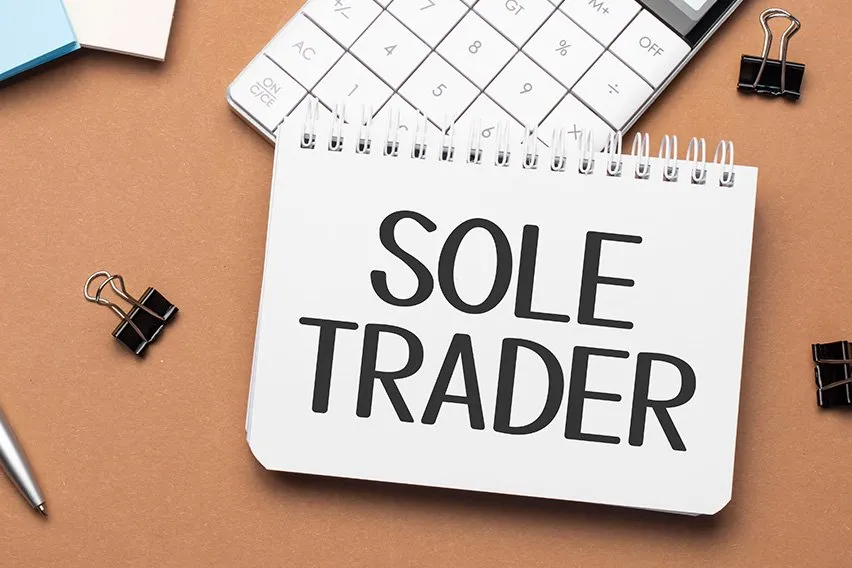How to Start an Online Store: 10 Steps to Follow

The way we shop is slowly but surely changing.
Let’s take a quick look at the figures from the UK Commerce Report 2021. Of total retail revenue in 2020 for the UK, 35% was from online stores.
There was also a 50% increase in eCommerce sales across all sizes and verticals. This could well have been inspired by the Coronavirus pandemic as 73% of UK consumers said that their experiences over the past year have meant they will stick with online shopping in the future.
This shows that it’s quite clearly a growing market.
A survey from BigCommerce in 2016 showed that the preference for online shopping tends to decrease with age. Millennials and Gen-Xers are far more likely to do their shopping online compared with Seniors and Baby Boomers.
There are many benefits to having an online store in comparison to a brick-and-mortar store – some of which we’ll get to later. Because of these benefits, opening an online store has become an attractive proposition.
But how exactly do you start an online store? We’ve put together a helpful guide to discuss the ins and outs of an online store, and the 10 steps you should follow to open your very own eCommerce business.
Here’s What We’ll Cover:
Why Do People Shop on the High Street?
Why Do People Shop Online?
It all began in 1979 when Michael Aldrich ‘invented’ online shopping. It revolutionized the retail business and started what we now call eCommerce.
In 1999, the first online-only store, Zappos, opened up. It was later bought by Amazon for $1.2 billion, that’s around £872 million.
Fast forward to 2020 and the Covid-19 pandemic triggered the start of a huge global surge for eCommerce stores. This was due to many high street retailers being forced to shut. In just three months, eCommerce sales had risen by around 77% which is a huge portion of the market.

So why do people shop online? Here are some of the most common advantages:
- Freedom: You are able to shop 24/7 with no limits.
- Cheaper: It’s easy to compare prices and save money.
- No Travel: You don’t have to use your vehicle or take public transport.
- Time Efficient: It’s time-saving not having to visit different stores.
- Convenience: It’s convenient and you don’t have to deal with crowds.
- Availability: Hard to find items are much easier to source online.
- Free Delivery: A lot of online stores offer free shipping.
However, more traditional brick-and-mortar stores are still doing well. So it’s not all doom and gloom just yet for the UK high street.
Why Do People Shop on the High Street?
While people are migrating to the internet for their shopping, offline stores are still where the majority of people get their goods. Here are some of the advantages of brick-and-mortar shopping:
- Interaction: Being able to interact with physical products before buying them is a big plus. This is especially true for buying items such as clothes, which may need to be tried on first. It’s also beneficial for grocery items that need to be checked for quality and freshness.
- Immediacy: When shopping in-store, you receive your goods immediately after paying instead of waiting for a delivery.
- Customer Service: People enjoy being able to speak directly with a sales rep and get information about the products.
- No Shipping Costs: You don’t have to pay for anything to be delivered.
- Returns: It’s far easier to take an item back to a shop than it is to deliver it back to an online store.
- The Experience: Going out shopping can be a great bonding experience with family and friends. It can be done in conjunction with other events such as dinner or a movie.
How to Start an Online Store
Now that we’ve talked about the advantages and disadvantages of online shopping, let’s get into starting your own online store.
With eCommerce on the rise, it’s arguably the best time to start an online business.
Essentially anybody with a computer can get started with an online store. With hosting sites such as Shopify, the process has never been simpler.
But how do you go about opening up your business online? Let’s take a look at the 10 steps to starting your very own online store.
1. Come Up With an Idea
In order to start a business, you need to have an idea. You need to plan what you want to sell and who you want to sell it to.
And as with any business, it’s crucial that you do your market research. You can have the best idea in the world, but if it’s not properly researched then it will never take off.
Through research and planning, you are far more likely to spot gaps in the market that you can fill and create a successful business.
2. Decide What to Sell
Deciding on a niche is the next step towards building your business. Perhaps you already have a product idea that you’re looking to sell. Or maybe you’re looking to start a dropshipping business where you’ll sell a number of products directly from the manufacturer.
Either way, choosing what type of product to sell is one of the most important parts of your business. You need to be able to identify what will catch your audience’s eye and make sure it’s a solid seller. The last thing you will want is to be stuck with a storeroom full of stock that isn’t selling.
3. Choose a Domain Name
In order for you to sell online, you need a website address and a custom domain. This is a vital step of the process as your name will reflect your business. The best idea is to pick a short and catchy name that will resonate with your target market and relate to your chosen niche.
It’s also important to choose a name that reflects legitimacy and integrity. People are always wary when purchasing online as there are a number of scam businesses. The more honest and legitimate your business sounds the more likely people will trust it.
4. Choose an eCommerce Platform
Once you have your idea nailed down and the perfect domain name to go with it, it is advantageous to choose an eCommerce platform to sell your products.
There’s no easy answer to choosing which platform to sell on as it will depend on a number of factors including:
- Your target market
- Your time commitment
- Your preferred payment and shipping services
- Your product range
This is an important decision as once you’ve chosen and set up on a platform, it’s difficult to then switch to another one. So you’ll want to consider the following:
- Cost: Some platforms offer a cheap plan, but the price will scale as you grow. Think about where you want to be in 1, 5 or 10 years time and judge accordingly.
- Features: One platform may offer features that are perfect for your business. Whilst others may be geared towards a different market. Make sure you pick one that suits what you are trying to achieve.
- Ease of Use: Starting an eCommerce business is a huge time commitment that will take a lot of work. Therefore you want to pick a platform that you find easy to work with. Otherwise, things could end up taking twice as long.
5. Solidify Your UVP and Branding
You may already have an idea of how you want to brand your business, but now is the time to solidify that idea.
You need to make sure that you have a unique value proposition for your audience. It should encompass what your online store does and what makes you different from anyone else who does something similar.
You will then want to focus on your persona. If your business were a person, who would that person be? What is their age, job, interests etc?
Knowing who you are and what you’re trying to reach will improve your marketing since you’ll know who you’re talking about.
Finally, you need to focus on and solidify your brand. You should have a logo, a colour scheme and a set of imagery that speaks to your brand. This is a chance to show your audience exactly what you’re about as a company. Many businesses live and die by their branding.
6. Choose Your eCommerce Features
Many online stores will have features designed to draw people in. They will be focused on giving valuable information with a secondary aim to sell. These additional features can prove to be hugely beneficial to your online success. Some examples of effective features are:
- Onsite Blogs: Having a blog section on your website can be extremely beneficial. Having SEO savvy blogs on your website helps to improve your SEO ranking and will drive more traffic to your store. Most people don’t enjoy reading blogs that are obviously purely there to sell the site’s wares. So make sure your blogs are focused on giving value.
- Customer Incentives: A number of shops offer features that help them to win new customers and reward loyal ones. By offering things like percentage discounts, promotions or purchase points, you can attract new customers and turn them into returning customers.
- Extra Resources: This benefit depends on what you’re selling. For example, if you’re selling workout equipment, it’s beneficial to your customers to offer resources such as diet plans or workout routines. It’s these extra resources that will offer value to your customers.
7. Set Up Your Payment Gateways
In order for your customers to pay for your goods or services, you need to set up an electronic payment system.
Depending on what eCommerce platform you’re using, this may come built-in. But most platforms also allow you to use an external payment system.
Online payment processors will allow your customers to purchase goods via the web. Your payment system should accommodate the following most commonly used payment methods:
- Debit or Credit Card Payments: Customers can pay with their card via an online payment transfer. They will have to fill out their details and have their transfer cleared by their bank.
- Internet Banking: This is done by digitally transferring funds from one bank account to another. This is a good method for smaller businesses or freelance workers.
- Direct Debit: These transactions transfer funds from a customer’s bank account via the help of a third party.
8. Set Up Your Fund Management
Once your payments are set up, you will want a fund management system in place.
Using accounting software will allow you to spend less time on bookkeeping and more time managing your online store.
Keeping your books in order is a vital component of running a successful business, especially when it’s time to fill out your tax return.

9. Market Your Business
Getting to the point where your online store is established and ready for launch takes a huge amount of work. But all that effort would be for nothing if you don’t properly market yourself.
You should research your online marketing options and start working on a plan to get your website out to as many people as possible. Many businesses use content marketing, paid promotion channels, or social media to spread the word about their business.
It’s important to dedicate a portion of your time towards driving traffic to your website. This can be done via social media posts, blog posts and other marketing tools.
One way to encourage potential customers is via social proof. Social proof is a way of proving that your store is real and trustworthy. People are far more likely to shop with you if they see other people have enjoyed their experience. This makes it a great marketing tool.
The extra costs put into your marketing should be seen as an investment. It may be seen as a hefty cost, but it can end up paying for itself in the long term.
10. Launch Your Site
The final step is to press go.
If you have followed the above steps then you should be good to go. Once you’ve sorted everything from products to shipping, you should be ready to launch your eCommerce business.
It may seem like the hard part is over. But in reality, the hard work has only just begun. Running and maintaining an online business is hard work. You’ll need to dedicate a huge amount of your time to the business to ensure everything is running smoothly and efficiently.
Key Takeaways
Online stores can be an exciting yet daunting task to launch. But by properly preparing and doing your due diligence, there is no reason why you shouldn’t find success.
As we previously mentioned, now is a fantastic time to start an online store. You may never feel like you’re 100% ready to take the step and launch a business. But if you’re waiting for the perfect time, then that time may never come.
So take the first step today towards what could be a very exciting future.
Are you looking for more business advice on everything from starting a new business to new business practices?
Then check out the FreshBooks Resource Hub.
RELATED ARTICLES

 What Is Intrinsic Value & How to Calculate It?
What Is Intrinsic Value & How to Calculate It? How to Start a Limited Company in the UK
How to Start a Limited Company in the UK What is a Sole Trader: Meaning, Role, and Pros & Cons
What is a Sole Trader: Meaning, Role, and Pros & Cons How to Register a Business Name in the UK
How to Register a Business Name in the UK UK Small Business Grants: What are They and How Do I Apply?
UK Small Business Grants: What are They and How Do I Apply? How Do I Register a Limited Company in the UK?
How Do I Register a Limited Company in the UK?